Sell More Faster, Part 1: Why You Need a Sales Strategy For Your Startup
Oct 19, 2020

Amos Schwartzfarb, author of Sell More Faster and Managing Director of the Techstars Austin Accelerator, explains why your startup needs a sales strategy — and gives tactical advice about how to develop the right strategy for your company.
This article is the first in a three part series. Read Part Two and Part Three for more details about how to Sell More Faster.
Want to get to work on your own W3 framework? Check out this learning module on The Entrepreneur's Toolkit.
Developing Your Sales Strategy: The W3 Framework
Visionary leaders, especially of early stage companies, often develop their sales strategy intuitively, based on their deep understanding of the product and market. However, many aren’t awesome at articulating exactly what they’re doing, or why. This is fine when you are the one selling to early customers, but immediately becomes a problem when you start trying to hire, forecast, and raise money. The problem with not having an articulated sales strategy is that you leave employees, candidates, and investors guessing at who buys what and why, and this, in turn, results in a lack of alignment, clarity, and confidence in the future.
I’ve now been running sales organizations for over 20 years. Early on, I too failed to understand the importance of a clearly articulated sales strategy. In fact, the concept of taking the time to articulate and write down a formal strategy seemed like a giant waste of time. Worse, if what we were doing and why we were doing it wasn’t obvious to someone, I questioned their intelligence or commitment to the company.
I was wrong.
It was 2005 and I was running sales and client services for Business.com when I finally realized just how important it was to articulate what “our” strategy was—and why it was that way. We had an incredible leadership team and a seasoned board and while I had great intuition and some raw talent at sales, I had very little classical business training. It wasn’t until I was asked to present my sales strategy to the board that I truly realized the importance of defining and articulating a sales strategy. Fortunately my CEO, Jake Winebaum, was (and still is) an incredible strategist and likewise very good at cultivating raw talent. He wouldn’t let me present anything less than a world-class strategy and pushed me very hard to develop and articulate mine.
I called my strategy W3. I presented it to the board and then my executive peers. They all bought in, so then I rolled it out to the sales team, making sure that everyone grasped both what we were doing and why. The result was amazing. Immediately we saw alignment across the entire sales team and across the company, which contributed to massive revenue growth over the next 18 months and eventually a sale of the company to R.H. Donnelly for $350M.
Read our interview with Amos about his book, Sell More Faster.
That experience was incredible in terms of maturing my comprehension of how to build a big and valuable business. More specifically, I learned that in order to have a working, growing, and effective sales department (and company) you NEED a well-defined and articulated sales strategy. This is not a suggestion: it is a requirement. Having a strong strategy the entire team can believe in and get behind drives sustainable results.
So what is W3? W3 is a framework for developing your strategy. It stands for the three most important attributes of a sale: WHO are you selling to? WHAT are they buying? WHY are they buying it?
WHO are you selling to?
What is your target industry? What segment(s) will get the most value? How do you identify and prioritize targets? Who is the target buyer within each company? What is the job title of the typical buyer? What is unique about the target buyer or companies you are selling to?
WHAT are they buying?
What product/feature is the customer buying? What problem are you solving for that buyer? How will they buy your product? How will they pay for your product?
WHY are they buying it?
What is the value you bring to the buyer? What is the value you bring to the company? How will the company measure that value? How will they be measured on that value? How will you measure the value you bring?
Clearly articulated answers to these questions will give your customers, employees, executive peers, and investors equal clarity on why there is value in working with you—and get you one step closer to having a scalable strategy and building a world-class company.
W3 applies to any company, regardless of stage or customer. Whether you are a startup or a Fortune 500 company, you need a sales strategy. Likewise, if you are a B2B enterprise software product, a consumer app, or a CPG company—you need a sales strategy. Without a strategy, your employees will not really understand direction, the team will have very little alignment, and managers can’t develop effective tools for employees to be successful long term.
Equally as important, without a strategy it’s extremely challenging for founders and senior leadership to be aligned around company vision. It becomes virtually impossible to work with each other because there is a lack of true clarity around what you are actually doing and why.
Finally, without a clear sales strategy, it is very challenging for investors to understand the value your product brings to your customers — which makes it harder for them to understand how you plan to grow and scale your business.
The W3 framework can be applied to any business, in any stage!
To help get you started, I’ve developed a simple exercise for you to go through. This will allow you to start testing your hypothesis and building your sales machine.
Below the exercise, I’ve described how we answered these questions at Business.com, as well as our conclusions.
Who are you selling to?
Write down who you think your customers are:
Define their profile.
Define how you segment.
Define how you will prioritize each segment.
Who do you think is the target buyer at each customer?
Write down why you think they are your target customer:
Define what they currently do without having your product.
Define how your product makes your customer grow revenue and improve margin, and how it makes their job easier compared to their current process.
Define how your product will affect those whom your customer works with (departmental dependencies).
What are they buying?
Write down the product you are selling.
Write down the product they are buying.
If there is a difference between what you are selling and what they are buying, write it down.
Why are they buying?
Write down why you believe the customer will buy your product.
Write down why the customer actually buys your product.
If there is a difference between why you believe they will buy and why they actually buy, write it down.
Write down your theory on the tangible value you provide (in $ if possible) and justify it:
How will your customer measure that value?
How will your customer be measured on that value?
How will you measure that value (for you and your customer)?
Now go test all this to see if you are right!
W3 – Business.com Example
Who are you selling to?
Write down who you think your customers is: At Business.com, we determined that our ideal customer was the adwords/search buyer at businesses that were trying to sell their products or services to SMBs. We chose the buyer because this was when adwords was still somewhat new and novel—we didn’t want to spend time educating prospects; instead we wanted to work with people who already saw the value in search advertising. We chose the buyer's target (SMBs) because we concluded (and later proved) that the opportunity breath for SMBs was exponentially greater than enterprise targets (fewer of, buy less often, and are slower to make decisions).
Define their profile: Digital marketers, whose products or services corresponded with the pages on Business.com with heavy search and directory traffic (ie: available inventory). Typically our buyer was under 35, highly analytical and reported to a Director or VP. Their title was usually Manager or Director of Search Advertising. If a company did not have a dedicated search buyer, we would de-prioritize them because it meant that either senior leadership didn’t yet understand the power and value of search advertising OR the search buyer wasn’t analytical enough to understand full conversion funnel metrics.
Define how you segment: Once we had an ideal customer profile, we used several tools including azoogle, our own search data, Google, and publically available lists of digital advertisers to create a list of over 40,000 potential customers (website, buyer name, proxy for digital spend, and search terms typically purchased) and segmented first by spend on Google and second by number of keywords purchased on Google. Next we looked at the buyer’s title (see above) and pulled out anyone who didn’t match our ideal customer profile.
Define how you will prioritize each segment: The cross reference mentioned above created a stacked rank priority list of highest revenue opportunity on Business.com. We (me, three of my directors, and two managers) then split up the top 10,000 companies (roughly 1,500 each) and reviewed each website for contact information and to find duplicates. This gave us our final prospect list that we handed to our sales team.
Who do you think is the target buyer at each customer: This is answered above
Write down why you think they are your target customer: We believed this was our target customer because they already showed an appetite for highly targeted digital direct marketing as part of their customer acquisition strategy AND we believed we were able to deliver highly targeted and high quality prospects looking for a product or service they offered.
Define what they currently do without having your product: At Business.com this was a tough one. We had to turn a negative into a positive, meaning that in some respects they already had our product thanks to Google. In many cases, early on it was hard for our prospects to comprehend why they would need us, too. This forced us to focus on the quality of the traffic we sent their way and also to create a high touch client service relationship. We knew we couldn’t (and didn’t want to) replace Google, so instead we focused on quality over quantity. Because of this, we had virtually no customer attrition. Ultimately what we had to prove (and did) was that Google provided quantity (often at a lower price), but we provided quality they couldn’t live without, to meet their sales goals.
Define how your product makes your customer grow revenue and improve margins and/or how it makes their job easier compared to their current process: In the case of Business.com, our value proposition was to help our customers grow revenue directly because we were a channel for them to acquire customers. That said, if we were not able to do that profitably, or if our product was too hard to use, we would not have been successful at selling or retaining our customers because they had alternatives. Our answer is: Business.com provided high quality leads to our customers as well as the tools to spend the right amount of money to acquire those customers at their target margins.
Define how your product will affect those whom your customer works with (departmental dependencies): This is a really key but often overlooked part of the sales process. Even if you have the right buyer who has the ability to approve the sale, sometimes there are other people or departments involved with the implementation. This can cause the implementation to be slow, sub-optimized, or even killed. You need to know this, and you need to ask this any time you are not completely sure of the answer. At Business.com, this was key to how we prioritized who we sold to. When a customer needed their tech department to implement tracking tags (vs. doing it themselves) we knew the go-live date would often be delayed (and sometimes by a lot). We would always ask this question and then work to get ahead of it, both in terms of implementation (developing a plan which included the appropriate technical person) and by forecasting the close date of those deals. Ultimately we wouldn’t close a deal until we had technical buy-in and commitment on an implementation date.
What are they buying?
Write down the product you are selling: At Business.com we sold CPC advertising.
Write down the product they are buying: At Business.com our customers were buying (high quality) leads and customers (depending on their landing pages).
If there is a difference between what you are selling and what they are buying, write it down: In our case there was a difference, and it was important to understand. We did not sell leads or customers. If we sold leads that would mean that we would be the ones to qualify (and/or close). This is important to note for a few reasons. First, so that we could develop the right pitch—the customer doesn’t care what you sell; they care what they buy. Second, so that we could set proper expectations. Third, so that we could focus sales, marketing, and product efforts on delivering the highest quality product that our customers were buying (vs. what we were selling). Here is an example: if we focused on what we sold, then our pitch and product efforts would be around maximizing inventory and quantity. Instead we focused on optimizing opportunity and quality.
Why are they buying?
Write down why you believe the customer will buy your product: At Business.com, we believed the customer bought our product to sell more of their products or services and increase their revenue.
Write down why the customer actually buys your product: In most cases, our customer was a mid-level employee. The reason our customer bought our product was to hit the goals their supervisor gave them so that they would be perceived as doing a good job.
If there is a difference between why you believe they will buy and why they actually buy, write it down: The company you’re selling to is trying to drive sales. Often however, the actual customer was trying to hit their goals. Take a minute to think about the different motivations. The company wants revenue. The employee wants to do good work and keep their job; they may or may not always care about the bigger picture. This is important to know prior to the sale, so you can understand how to work with your customer so that the employee hits their goals, the company hits their goals—and we hit ours.
Write down your theory on the tangible value you provide (in dollars if possible) and justify it: At Business.com, we provided direct customer and revenue increases for our customers.
How will your customer measure that value: At Business.com, our customer measured the value we provided by looking at their sales numbers and cost per customer, and the more savvy customers also looked at lifetime value of our customers (vs. other sources).
How will your customer be measured on that value: Our customer was measured on their ability to buy leads or customers by quantity and with an expectation of cost per customer within given bounds. In other words, there was a cap on what they could spend with us and still acquire a profitable customer.
How will you measure that value (for you and your customer): This is hard; know that in advance. It’s also critical if you want your customer base to be high value and long lasting. It starts with really candid and transparent conversations up front, before a sale is made. It’s imperative that you ask your customer how they will measure success and what success looks like for them. And then don’t just take it on face value—ask them why (and why again). Get to the root. Make sure they have the tools, intelligence, and ability to know and measure. Make this conversation part of the sales process, and use it as a way to continually check in to make sure goals are being hit (and not being shifted without your knowledge, leaving you with no way to help your customer succeed). At Business.com we realized that while most of our customers used Google Analytics well to measure their Google campaigns, they did not have the tools to measure ours. This helped guide our product development efforts: we both built a way to add our campaigns into their Google Analytics and also developed our own analytics tool (so we could also track metrics). We provided exceptional customer service by always being in-step with—if not a step ahead of—how our customers were doing.
If there is one single take-away here, it’s know your metrics and stay on top of them!
Want more tactical instructions for developing your startup sales strategy? Read Part Two and Part Three of this three-part series.
About the Author

Amos Schwartzfarb
Amos Schwartzfarb is Managing Director of the Techstars Austin Accelerator, and after over 70 seed stage investments, he has become one of the more active early stage investors in all of Texas. Amos is the is the co-author of Levers: The Framework for Building Repeatability Into Your Business, author of Sell More Faster: The Ultimate Sales Playbook for Startups.

